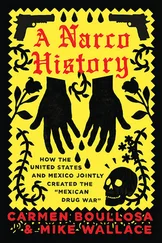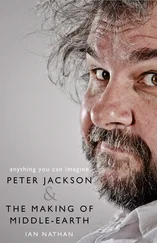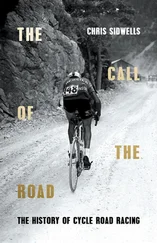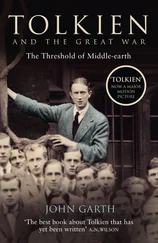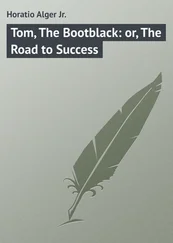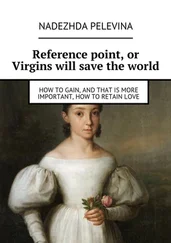Bilbo has all along been (nearly) immune to the paraphernalia of heroism. He would like to see himself in a ‘looking-glass’ when Thorin outfits him with mithril armour, but fears he looks ‘rather absurd’, especially when he thinks of his neighbours on The Hill back home. He also listens with dismay and disapproval to the proud speeches of Bard and Thorin, and takes his own steps to break heroic deadlock.
‘Really you know,’ Bilbo was saying in his best business manner, ‘things are impossible. Personally I am tired of the whole affair. I wish I was back in the West in my own home, where folk are more reasonable. But I have an interest in this matter – one fourteenth share, to be precise, according to a letter, which fortunately I believe I have kept.’ He drew from a pocket in his old jacket (which he still wore over his mail), crumpled and much folded, Thorin’s letter that had been put under the clock on his mantelpiece in May!
‘A share in the profits, mind you,’ he went on. ‘I am aware of that. Personally I am only too ready to consider all your claims carefully, and deduct what is right from the total before putting in my own claim.’ (p. 250)
This speech and speaker could hardly be less like the ones that surround it. Bilbo’s behaviour is solidly anachronistic, for he is wearing a jacket, relying on a written contract, drawing a careful distinction between gain and profit, and proposing a compromise which would see Bard’s claim as running expenses (almost tax-deductible). Where Bard and Thorin used archaic words (‘Hail!’, ‘foes’, ‘hoard’, ‘kindred’, ‘slain’), he uses modern ones: ‘profit’, never used in English till 1604, and then only in Aberdeen, ‘deduct’, recorded in 1524 but then indistinguishable from ‘subtract’ and not given its commercial sense till much later, ‘total’, not used as here till 1557, ‘claim’, ‘interest’, ‘affair’, ‘matter’, all French or Latin imports not adopted fully into English till well after the Norman Conquest. It is fair to say that no character from epic or saga could even begin to think or talk like Bilbo. But what is the effect here of this final sharp juxtaposition between Bard and Bilbo, ‘hero’ and ‘businessman’?
It does continue The Hobbit ’s strong vein of comedy. It also leads to a sort of ‘eucatastrophe’, to use Tolkien’s own term, as Mr Baggins and the sympathetic reader with him find themselves and the modern code of humility and compromise regarded with gratifying wonder by the Elvenking and Gandalf himself. Still, the comedy is not all one way, for Bilbo remains faintly ridiculous; no one should see The Hobbit as a straight progression from satire against the modern world to satire against the ancient one. What chapter 16 and the scenes around it do most powerfully, perhaps, is to enforce a plea for tolerance across an enormous gap of times and attitudes and ethical styles. On the one hand there is Bilbo Baggins, with his virtue of ‘moral courage’ or readiness ‘to encounter odium, disapproval, or contempt rather than depart from what he deems the right course’ (first recorded 1822); his corresponding vice is ‘self-distrust’ (1789). On the other we have Beorn, Thorin, Dain, whose virtue can only be described by such a non-English noun as the Old Norse drengskapr – magnanimity, the awareness of being a warrior and so on one’s dignity, the quality Dain shows in ratifying Thorin’s agreement even though Thorin is dead – and whose vice is a kind of selfish materialism. Neither side is better than the other, or has any right to criticise. The contrast is one of styles, not of good and bad. Accordingly, though throughout The Hobbit there have been scenes where the pretensions of one have been exposed by the other (Bilbo sneering at Thorin’s elevated language, p. 198, Gloin cutting Bilbo very short at p. 19), by the end even the two linguistic styles have become invulnerable to each other’s ironies:
‘Good-bye and good luck, wherever you fare!’ said Balin at last. ‘If ever you visit us again, when our halls are made fair once more, then the feast shall indeed be splendid!’
‘If ever you are passing my way,’ said Bilbo, ‘don’t wait to knock! Tea is at four; but any of you are welcome at any time!’ (p. 269)
There is not much in common between the language of these two speakers; nevertheless it is perfectly clear that they are saying the same thing. Going on from his beliefs in ‘the reality of language’ and ‘the reality of history’, Tolkien was perhaps beginning to arrive at a third: ‘the reality of human nature’.
The bewilderment of Smaug
This is a slippery and a dangerous concept. If there is one thing which twentieth-century anthropology has proved, it is that people are different, and that even matters which appear entirely natural or instinctive are so enmeshed in nets of custom as to make it impossible to detect ‘human universals’. There is no sign that Tolkien took any notice of modern anthropology, but then he hardly needed to. Ancient texts would provide him with any number of examples of how what is now considered natural might be in another age unthinkable, or vice versa. People’s behaviour all too evidently changes. But isn’t there something underneath the nets of custom that remains the same? Something that would link modern Englishmen with their Anglo-Saxon ancestors just as philology sees, beneath a thousand years of change, essential continuity between the language of Beowulf and that of today?
Tolkien must have been brooding on this question for many years. In 1923 he published in The Gryphon (the magazine of Leeds’s Yorkshire College) a poem called ‘Iumonna Gold Galdre Bewunden’, the first version of what was to become in 1970 ‘The Hoard’. The first title is better, though, for it means ‘the gold of ancient men, wound round with magic’, it is line 3052 of Beowulf ’, and it points to a notorious difficulty in that poem over the hero’s motives. When he went to fight his dragon he appeared to do so for the best of reasons, i.e. to protect his people. On the other hand he also showed a keen interest in the treasure, which the dragon was only trying to guard, having been provoked by the theft of a cup by a passing runaway (or ‘burglar’). At one point indeed, in a violently-disputed passage, the poet seems to say that there was a curse on the gold, so that the man who plundered it ‘should be guilty of sin, be shut up in devil’s haunts, bound in hell-bands and tormented grievously. Yet by no means too eagerly had Beowulf before gazed upon its owner’s treasure of gold with the curse on it.’ 18 Was Beowulf guilty or not? Did the curse punish him or not? Certainly the hoard he wins brings death to him and disaster to his people. Maybe this is also a punishment for the spark of avarice the poet is hinting at. But then maybe the dragon-curse is itself avarice. So Tolkien suggested in the 1923 poem, tracing in successive stanzas the transmission of a treasure from elf to dwarf to dragon to hero and ending with the picture of an old and miserly king overthrown by his rivals and leaving his gold to oblivion. All the characters in it are the same: they begin with vitality, mirth and courage, they end in age, wealth and squalor. Their decline is caused by gold. Could their progress also be a kind of analogue of human history, beginning in heroic endeavour and ending in ‘commercialism’, ‘materialism’, ‘industrialism’, that whole series of distinctively modern concepts which nevertheless centre if not on gold, on that ‘idolatry of artefacts’ which C. S. Lewis called, in evident agreement with Tolkien, the ‘great corporate sin of our own civilisation’? 19 If one does think that for a moment, there is a further corollary: just as old miser grew out of young hero eager for treasure, so the ‘great corporate sin’ of modernity must have had some ancient origin. This sinful continuity between ancient and modern must have been on Tolkien’s mind as he finished The Hobbit.
Читать дальше

